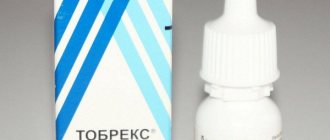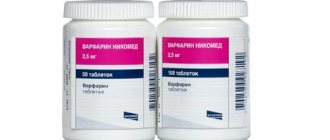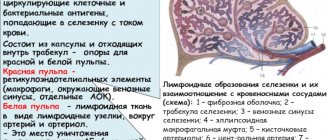Prednisolone - what you need to know when taking this drug
Most often in non-medical circles it is called a steroid or glucocorticoid; many people think that this is a very dangerous drug and are very reluctant to agree to treatment with this drug.
But for certain diseases, prednisolone is considered an obligatory and necessary drug of first choice in the treatment of the disease (for example, nephrotic syndrome, which you can read about here).
We will not talk about the drug itself and for what diseases it should be prescribed, but our information block about what doctors usually forget when they prescribe prednisolone. Typically, children come for consultation while taking prednisolone in combination with asparkam. Believe me, hypokalemia (decrease in the level of potassium in the blood), which is why asparkam is prescribed, is not the most common complication when prescribing prednisolone.
In our department practice, almost 90% of patients receiving this drug are observed with a diagnosis of nephrotic syndrome.
Prednisolone is prescribed for a long term (the full course of therapy until the drug is discontinued can last 6-12 months); additional medications must be prescribed to prevent the side effects of prednisolone. This:
- In order to protect the mucous membrane of the upper gastrointestinal tract (esophagus, stomach, duodenum), prednisolone may cause indigestion, nausea, vomiting and more serious complications such as steroid ulcers. However, all this can be avoided by taking so-called gastroprotective drugs (i.e., stomach protection in literal translation). These are antacid drugs (for example, Maalox, phosphalugel, etc.), H+ pump blockers (for example, Omeprazole), drugs that improve gastrointestinal motility. All doses of drugs are selected individually according to age and body weight.
- Bone protection. Long-term use of steroids can cause a decrease in bone mass, and so-called steroid osteoporosis (bone loss) can develop, which ultimately leads to bone fractures. But this condition can also be prevented by taking calcium and Vitamin D supplements . The dose of drugs is also selected individually.
What else you need to pay attention to:
- Be sure to monitor your blood pressure
- Observation by an ophthalmologist: vision control, the state of intraocular pressure and the lens of the eye.
- If you take prednisolone for a very long time, check your blood glucose levels.
- Mental health status. Children very often become capricious, sometimes even aggressive. This condition goes away on its own after discontinuation of the drug.
- Watch your weight and diet. While taking prednisolone, appetite increases greatly. However, you as a parent can monitor your child’s nutrition; you must limit the intake of easily digestible carbohydrates.
- In order to monitor and evaluate the effectiveness of gastroprotective therapy, the mucous membrane of the upper gastrointestinal tract is assessed by EGDS (gastroscopy).
This information was prepared by a department employee (pediatrician) for informational purposes. It is imperative to consult with your doctor.
If you have any questions about this topic or have suggestions, we are happy to answer questions and accept your suggestions.
Prednisolone
Since complications of therapy with Prednisolone depend on the dose and duration of treatment, in each specific case, based on an analysis of the risk/benefit ratio, a decision is made on the need for such treatment, and the duration of treatment and frequency of administration are determined.
The lowest dose of Prednisolone that provides a sufficient therapeutic effect should be used; if necessary, the dose should be reduced gradually.
Due to the risk of developing arrhythmia, the use of Prednisolone in high doses should be carried out in a hospital environment equipped with the necessary equipment (electrocardiograph, defibrillator).
If prolonged spontaneous remission occurs, treatment should be discontinued.
During long-term treatment, the patient should undergo regular examination (chest x-ray, plasma glucose concentration 2 hours after meals, urinalysis, blood pressure, body weight control, preferably an x-ray or endoscopic examination if there is a history of gastrointestinal ulcers). intestinal tract).
The growth and development of children on long-term therapy with Prednisolone should be carefully monitored. Growth retardation may occur in children receiving long-term, daily, multi-dose therapy. Daily use of prednisolone for a long time in children is possible only for absolute indications. Taking the drug every other day may reduce the risk of developing this side effect or avoid it altogether.
Children receiving long-term therapy with Prednisolone are at increased risk of developing intracranial hypertension.
Patients receiving drugs that suppress the immune system are more susceptible to infections. For example, chickenpox, genus, and measles can be more severe and even fatal in unimmunized children or in adults receiving Prednisolone.
Prednisolone should also be prescribed with great caution to patients with confirmed or suspected parasitic infections, such as strongyloidiasis. Prednisolone-induced immunosuppression in such patients leads to strongyloid hyperinfection and dissemination of the process with widespread migration of larvae, often with the development of severe forms of enterocolitis and gram-negative septicemia with possible death.
During prednisolone therapy, susceptibility to infections may increase, some infections may occur in an erased form, and new infections may develop. In addition, the body’s ability to localize the infectious process is reduced. The development of infections caused by various pathogenic organisms, such as viruses, bacteria, fungi, protozoa or helminths, which are localized in various systems of the human body, may be associated with the use of the drug Prednisolone, both as monotherapy and in combination with other immunosuppressants that affect on cellular immunity, humoral immunity or neutrophil function. These infections may not be severe, but in some cases they can be severe and even fatal. Moreover, the higher doses of the drug are used, the higher the likelihood of developing infectious complications.
In patients receiving treatment with Prednisolone in doses that have an immunosuppressive effect, the administration of live or live attenuated vaccines is contraindicated, but killed or inactivated vaccines can be administered, however, the response to the administration of such vaccines may be reduced or even absent. Patients receiving treatment with Prednisolone in doses that do not have an immunosuppressive effect may be immunized according to appropriate indications.
The use of Prednisolone in active tuberculosis should be limited to cases of fulminant and disseminated tuberculosis, when Prednisolone is used to treat the disease in combination with appropriate anti-tuberculosis chemotherapy. If the drug Prednisolone is prescribed to patients with latent tuberculosis or with positive tuberculin tests, then treatment should be carried out under strict medical supervision, since reactivation of the disease is possible. During long-term drug therapy, such patients should receive appropriate preventive treatment.
There have been cases of the development of Kaposi's sarcoma in patients receiving GCS therapy. When the drug is discontinued, clinical remission may occur.
When using the drug Prednisolone in therapeutic doses for a long period, suppression of the hypothalamic-pituitary-adrenal system (secondary adrenal insufficiency) may develop. The degree and duration of adrenal insufficiency is individual for each patient and depends on the dose, frequency of use, time of administration and duration of therapy.
The severity of this effect can be reduced by using the drug every other day or by gradually reducing the dose. This type of relative adrenal insufficiency can continue for several months after the end of treatment, so in case of any stressful situations during this period, Prednisolone should be re-prescribed. If the drug is abruptly discontinued, acute adrenal insufficiency may develop, leading to death.
GCS withdrawal syndrome (not related to adrenal insufficiency) can also occur due to abrupt drug withdrawal. This syndrome includes symptoms such as anorexia, nausea, vomiting, lethargy, headache, fever, joint pain, skin peeling, myalgia, weight loss and low blood pressure. It is assumed that these effects occur due to sharp fluctuations in the concentration of prednisolone in the blood plasma, and not due to its decrease.
Patients with hypothyroidism or cirrhosis have a more pronounced effect of prednisolone.
Since the secretion of mineralocorticosteroids may be impaired, concomitant administration of electrolytes or mineralocorticosteroids is necessary.
Moderate to large doses of hydrocortisone or cortisone may cause increased blood pressure, sodium and water retention, and increased potassium excretion. These effects are less likely with the use of synthetic corticosteroids (including prednisolone), except when they are used in high doses. It is necessary to limit the consumption of table salt with food and prescribe potassium supplements. All corticosteroids increase calcium excretion.
The use of Prednisolone may lead to an increase in the concentration of glucose in the blood plasma and a worsening of existing diabetes mellitus. Patients receiving long-term therapy with Prednisolone may be predisposed to developing diabetes mellitus.
For patients who may be exposed to stress during treatment with Prednisolone, an increase in the dose of the drug is indicated before, during and after a stressful situation.
During therapy with Prednisolone, the development of various mental disorders is possible: from euphoria, insomnia, mood swings and depression to acute mental manifestations. In addition, existing emotional instability or psychotic tendencies may be exacerbated.
Potentially severe mental disorders may occur when using Prednisolone. Symptoms usually appear within a few days to weeks after starting therapy. Most reactions disappear either after reducing the dose or after discontinuation of the drug. Despite this, specific treatment may be required. Patients and/or their relatives should be warned that if changes occur in the patient's psychological status (especially with the development of depression and suicidal attempts), they should seek medical help. Patients or their relatives should also be warned about the possibility of developing mental disorders during or immediately after reducing the dose of the drug or completely stopping it.
There are reports of the development of epidural lipomatosis in patients receiving GCS. Usually with long-term therapy at high doses.
Long-term use of the drug Prednisolone can lead to the occurrence of posterior subcapsular cataracts, exophthalmos or glaucoma with possible damage to the optic nerve and provoke the addition of a secondary ocular fungal or viral infection.
Due to the existing risk of corneal perforation, GCS should be prescribed with caution when treating eye infections caused by the herpes simplex virus (ophthalmoherpes).
Prednisolone therapy can lead to the development of central serous chorioretinopathy, which in turn can lead to retinal detachment.
Therapy with Prednisolone may mask the symptoms of a peptic ulcer, in which case perforation or bleeding may develop without significant pain.
Prednisolone should be used with caution in patients with risk factors for cardiovascular diseases, including hyperlipidemia and patients predisposed to high blood pressure, since taking Prednisolone may provoke new reactions when using high doses of the drug and long-term treatment. Regular monitoring of heart function is necessary. Using low doses of Prednisolone every other day may reduce the severity of these reactions.
Careful monitoring of patients receiving systemic corticosteroids and those who have recently suffered a myocardial infarction is necessary.
Patients taking Prednisolone should be prescribed acetylsalicylic acid-based analgesics and non-steroidal anti-inflammatory drugs with caution.
Allergic reactions are possible. Due to the fact that phenomena such as skin irritation and anaphylactic or pseudoanaphylactic reactions have rarely been observed in patients receiving GCS, the necessary measures should be taken before prescribing GCS, especially if the patient has a history of allergic reactions to drugs.
High doses of corticosteroids can cause acute pancreatitis.
Therapy with high doses of GCS can cause acute myopathy; In this case, the disease is most susceptible to patients with disorders of neuromuscular transmission (for example, myasthenia gravis), as well as patients receiving concomitant therapy with quinolytics, for example, blockers of neuromuscular transmission. This kind of myopathy is generalized; it can affect the muscles of the eyes or respiratory system and even lead to paralysis of all limbs. In addition, creatine kinase levels may increase. In such cases, clinical recovery may take weeks or even years.
Osteoporosis is a common (but rarely detected) complication of long-term therapy with high doses of corticosteroids.
GCS are prescribed with caution for long-term therapy in elderly patients due to the increased risk of osteoporosis and fluid retention in the body, which potentially causes an increase in blood pressure.
Concomitant treatment with methylprednisolone and fgorquinolones increases the risk of tendon rupture, especially in elderly patients.
Since prednisolone can enhance the clinical manifestations of Itsenko-Cushing syndrome. Prednisolone should be avoided in patients with this disease. Careful monitoring of patients with a history or current history of thrombosis or thromboembolic complications is necessary.







